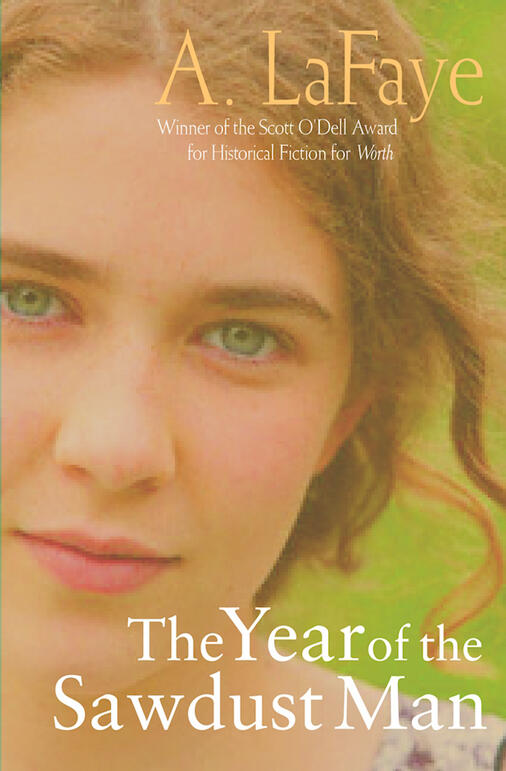Passing Down
“I’m not some used car salesman you can bargain with,
Muriel.” Edna pointed the knife, balancing her sister’s left eye
perched on the tip.
“So getting some fuzzy dice over the mirror is out of the
question?” Muriel ranked arguments right up there with
colonoscopies. And ever since she’d chosen a tour of the country
via a used VW bus over college four decades earlier, her sister,
Edna, acted like she’d been promoted to eldest in the family
because she hadn’t shirked her duties.
She’d like to shirk something all right.
Suddenly, she remembered her mother standing at the
window of the van, handing her the only camera in the family.
“Take them everywhere you go. Send a few home when you
can.”
And that was her mother’s good-bye as she stepped back and
waved before returning to the house while her dad finished a
last-minute engine check like she was preparing for takeoff.
Spying her mother’s photo album tucked sideways on a
bottom shelf in Edna’s living room, Muriel shook her head,
thinking, I must have taken a million shots with that thing. Why
didn’t I send more to Mom? Her mom had kept that photo of her
waving from the tunnel of a giant sequoia on the fridge for
nearly a decade.
“Muriel,” Edna pressed the knife into the cutting board,
bringing her back this tiff over furniture. A bunch of wood glued
together in useful ways. “That bedroom suite wasn’t just our
mother’s it was her mother’s before her. It needs to be passed
down.”
“It’d be passing down to me.” And lord knows she needed
some furniture. Her place was so empty she was getting sick of
the echo every time she headed to the kitchen.
“Who gets it after that, Pedro?” Edna huffed.
“That bird will outlast me by 25 years, easy. He’s always
loved dark woods.”
Setting her shoulders, Edna said, “It’ll go to me, then to Mary
Anne.”
Muriel held her hands up to weigh things out. “Covered in
bird shit, sold at the first pawn shop to take it? Not sure which is
worse. What do you think?”
Edna sliced carrots with sous chef speed, muttering to herself.
“Do you have room in this house for a bedroom suite?”
Muriel glanced around the cluttered room. The behemoth
sideboard beside her sat piled with papers filed between green
depression glass service wear. Their Aunt Jane’s Muriel
believed. She could still smell her plum preserves boiling on a
stove.
Then she spied the yellow vinyl stool that had occupied the
very same spot in their mother’s kitchen. She’d perched on the
edge of that seat after school to chat with their mother so many
times, Edna called it “Muriel’s thrown.” Her ass wouldn’t even
fit in it now.
For a moment, she remembered her mother’s earrings
bobbing as she washed the dishes, telling her about the fire at
Granger’s Market. That little electrical short lead to a pretty
buttery-sweet, insurance-financed bakery. Their mother
decorated birthday cakes in that kitchen for years – with two free
cakes a year as a bonus.
That memory filled Muriel’s nose with the smell of a much
more recent fire far closer to home. So much for all those photos
she took on her anti-college road trip. Clearing her throat, she
asked, “For that matter, does Mary Anne have somewhere to live
at the moment?”
Edna kept her eyes fixed on her vegetables. “Just because my
daughter is having some difficulty arranging things for herself,
doesn’t mean you should get the furniture.”
“And what does it mean that her little accident left me with
ongoing feud with the insurance company and a new empty
apartment I can’t afford?”
“It should be passed, Muriel.” Edna stood, facing the sink,
hands on either edge for support. “Who will you pass it on to?”
“Shall I adopt someone? I’m a little over the hill, but I bet I
could find a deserving sixteen-year-old out there somewhere.”
“I have a daughter!” Edna washed her hands in water that
blanched her skin.
“Your daughter will probably see other uses for that furniture.
Resale value comes to mind.”
“Fine, Muriel, fine. Take it! Burn it for all I care.”
Muriel stood in the doorway of her sister’s kitchen, noticing
Edna’s stooped shoulders moving to the rhythm of her tears.
Reminded of their mother, Muriel could recall her keeping time
with a song on the radio as she folded their father’s work shirts
over the cherry red Formica table.
The dishes put up to dry, she’d sit at the vanity in the
bedroom, take out her earrings, comb out her minky brown hair,
and tell their father about all the news – Gladys Foster lost her
keys and trampled all her flowers in a mad search. Muriel’s bike
needs a tune-up, she rode it down Shotgun Hill again. Kelly’s
had loaves of bread for a dime. Oh, and Edna’s piano recital will
be next Saturday at the church. Can you come or is there an Elks
meeting?
Her father nodded and hummed his replies. Punctuated with
“that girl has a death wish” and “I can make it if you get my suit
cleaned.”
Her mother’s earrings, cut glass, the lone pair, shimmering in
a bowl below the lamp, casting tiny rainbows onto the wall – so
much color from such cheap glass.
“Edna.”
A hmph of a response.
“Mary Anne can have them, when she’s ready.”
Edna turned. “Isn’t that the point of this little negotiation,
Muriel?”
Muriel turned to the side door. Gripping the handle, she said,
“We’re never ready for what our mothers have to pass down to
us. That’s the point, Edna.”







